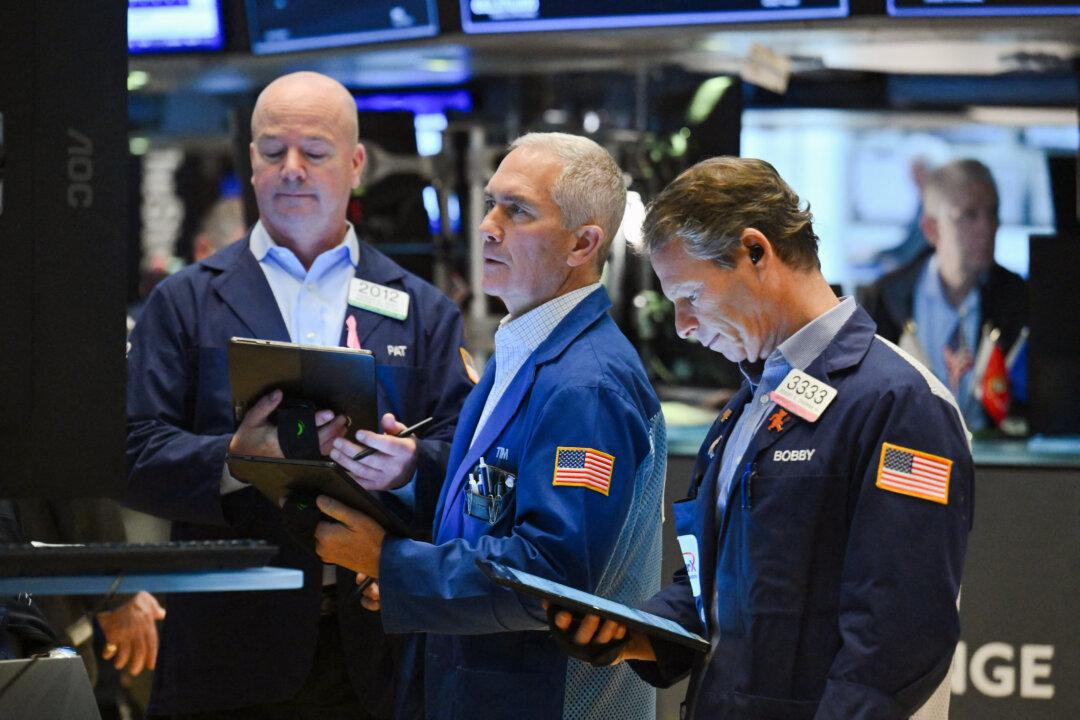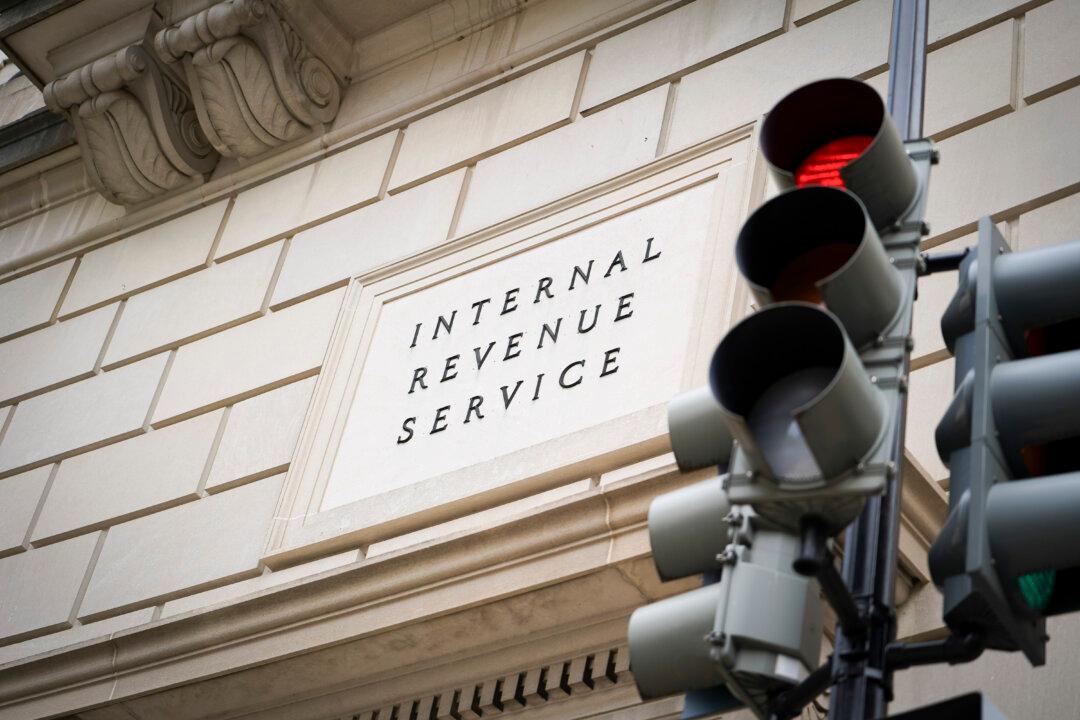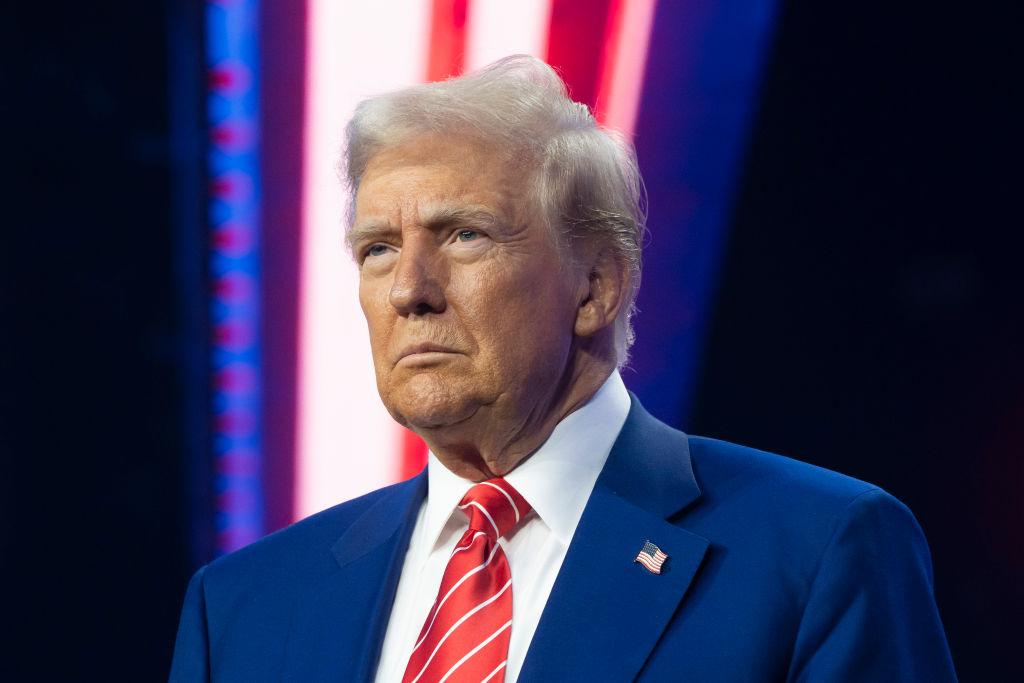The rebound came after the Dow shed over 1,200 points last week, while the Nasdaq notched its biggest weekly loss since January 2022.
Wall Street’s major indexes climbed more than 1 percent on Sept. 9 as investors bought the dip after last week’s weaker-than-expected jobs report and disappointing manufacturing numbers sparked a sharp selloff in risk assets like equities.
At closing bell on Monday, the Dow Jones Industrial Average rose 484.18 points, or 1.20 percent, to 40,829.59, the S&P 500 gained 62.63 points, or 1.16 percent, to 5,471.05 and the Nasdaq Composite gained 193.77 points, or 1.16 percent, to 16,884.60.
The rebound came after the Dow shed over 1,200 points last week, while the Nasdaq notched its biggest weekly loss since January 2022, as concerns about the health of the U.S. economy surged to the forefront as
weak manufacturing reports, a
historic rise in August layoffs, and a lackluster
jobs report fanned fears of an economic slowdown.
“Investors had a little time over the weekend to think about things. Clearly there was an overreaction to economic data last week. It raised overblown fears of a potential recession,” said Kristina Hooper, chief global market strategist at Invesco. “A pause gives you the opportunity to be more rational.”
Analysts at major banks variously put the odds of a U.S. recession at 20 percent (Goldman Sachs), 25 percent (UBS Global Wealth Management), and 35 percent (JP Morgan Chase), while Morgan Stanley on Monday cut its oil forecast, saying traders are pricing in a demand slowdown on par with a mild recession.
Some market strategists said that Monday’s buying spree in stocks was classic dip-buying behavior as investors went shopping for bargains.
Phil Blancato, chief market strategist at Osaic Wealth in New York, said investors were looking at “high quality stocks that are cheaper.” As an example, Blancato pointed to shares of chipmaker Nvidia, which closed up 3.5 percent on Monday after falling 15.3 percent last week.
Investors are sure to pay close attention to Wednesday’s consumer price index (CPI) data for signs of where inflation is headed and clues as to whether the Federal Reserve will cut interest rates by 25 or 50 basis points later this month. Currently, investors have fully priced in a rate cut when Fed officials meet on Sept. 18 to vote on the benchmark fed funds rate,
according to the CME Fed Watch Tool. The odds of a smaller quarter-point cut now stand at 70 percent compared to a 30 percent chance for a 0.5 percentage point rate reduction.
Faced with soaring inflation that
hit a recent peak of 9 percent in June 2022, Fed officials brought interest rates up quickly to their current level of between 5.25-5.5 percent, dampening lending activity and helping to bring down inflation, while cooling the economy and the jobs market.
Wednesday’s CPI inflation report is expected to show slight drop in the headline pace of inflation in August to 2.6 percent year-over-year, while on a monthly basis it is expected to remain unchanged at 0.2 percent.
Another event of possible consequence for investors is the Sept. 10 presidential candidate debate between former President Donald Trump and Vice President Kamala Harris.
ING analyst Chris Turner called the debate “potentially one of the biggest market movers this week” in a Sept. 9
note. “Joe Biden’s poor performance in the previous debate in late June presaged a swing in the polls towards Trump and a firmer dollar.”
ING’s
analysis of the potential impact of the presidential election on markets predicts that the most bullish scenario for the greenback is if Trump wins the presidency and Republicans win control in Congress.
ABC will host the 90-minute debate in Philadelphia. The Harris campaign introduced a new webpage titled “A New Way Forward” over the weekend that details her policy positions on key issues, such as border policies and the economy.
A recent
poll found that voters were uncertain about where Harris stands on key policy issues ahead of the debate.
Reuters contributed to this report.







